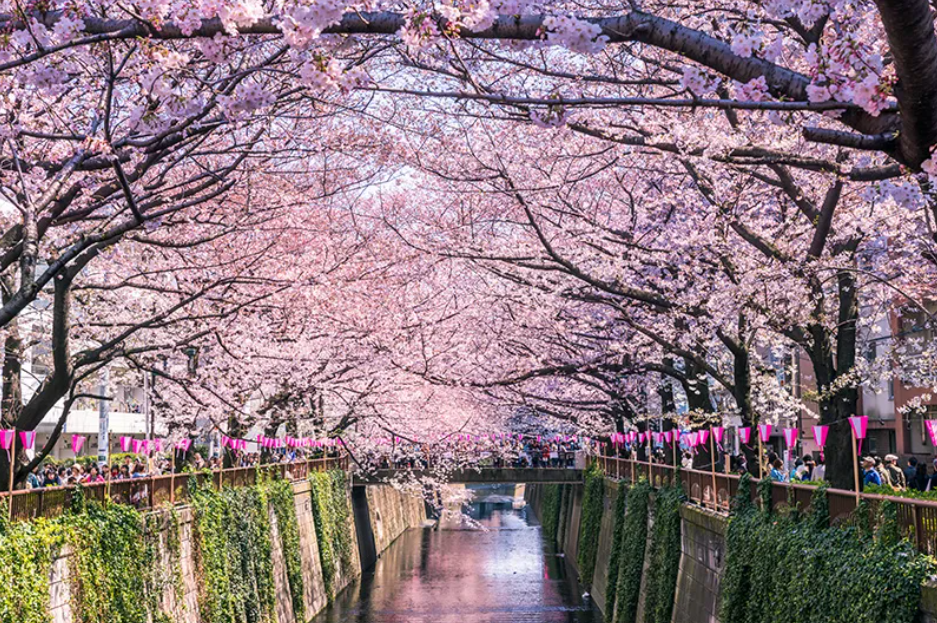Introduction: Why Cherry Blossom Season in Japan is So Special
Cherry blossoms, or “sakura,” hold a deep cultural significance in Japan. For centuries, the arrival of spring has been celebrated with hanami, the tradition of gathering under blooming cherry trees with friends and family. Whether you’re a first-time visitor or a seasoned traveler, experiencing Japan’s cherry blossoms firsthand is an unforgettable experience. But to truly enjoy hanami, it’s important to plan ahead. The timing of cherry blossoms is unpredictable, and knowing when and where to see them can make all the difference.
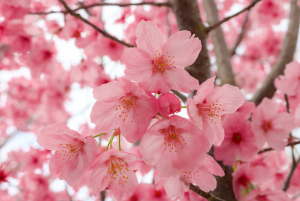
I remember my first cherry blossom season in Japan. I had just arrived in Tokyo, and a local friend insisted we wake up at dawn to secure a good spot at Ueno Park. At first, I didn’t understand the urgency—why would we need to arrive so early? But as the sun rose, the park quickly filled with excited picnickers, and I realized how passionate Japanese people are about hanami. If you want to make the most of your cherry blossom experience, timing is key!
1. When Do Cherry Blossoms Bloom in Japan?
Cherry blossoms bloom at different times across Japan, depending on the climate. Here’s a general timeline:
- Okinawa (Late January – Early February): The earliest cherry blossoms appear in the subtropical islands of Okinawa.
- Kyushu, Shikoku, and Honshu (Late March – Early April): Most of Japan’s major cities, including Tokyo, Kyoto, and Osaka, experience peak bloom during this time.
- Hokkaido (Late April – Early May): The northernmost region of Japan enjoys cherry blossoms after the rest of the country has finished celebrating.
One thing to keep in mind is that cherry blossoms are fleeting. Once they start blooming, they usually reach full bloom within a week and start falling shortly after. This means you have to be strategic with your travel plans.
A friend of mine once planned a trip to Kyoto to see the cherry blossoms, but he booked his flight just a week too late. By the time he arrived, all the petals had fallen, leaving only green leaves. To avoid this disappointment, I always recommend checking the latest cherry blossom forecast before finalizing your itinerary.
2. Cherry Blossom Forecast Japan: 2025 Updates
Each year, meteorologists track cherry blossom patterns to predict when they will bloom. The forecast is usually updated regularly by the Japan Meteorological Corporation and Weather News. Here’s the projected bloom schedule for 2025:
- Tokyo: March 25 (blooming), April 1 (full bloom)
- Kyoto: March 28 (blooming), April 3 (full bloom)
- Osaka: March 26 (blooming), April 2 (full bloom)
- Sapporo: April 25 (blooming), May 1 (full bloom)
The best way to stay updated is by following reliable websites such as the Japan Meteorological Corporation’s official page. Many tourists also rely on social media, where locals and photographers share real-time blossom conditions.
3. Cherry Blossom Events in Japan
Japan hosts many cherry blossom festivals, each with unique traditions and entertainment. Some of the best events include:
- Meguro River Sakura Festival (Tokyo): Picture thousands of cherry trees lining a river, with pink petals floating on the water. This event also features nighttime illuminations, creating a magical atmosphere.
- Osaka Mint Bureau Sakura Viewing: A once-a-year opportunity to stroll through a stunning cherry blossom tunnel.
- Hirosaki Cherry Blossom Festival (Aomori): One of Japan’s most breathtaking spots, with thousands of trees surrounding Hirosaki Castle.
Attending one of these festivals is a fantastic way to experience cherry blossoms beyond just taking photos. You can enjoy street food, traditional performances, and even rent a yukata to fully embrace the experience.
4. How to Enjoy Hanami Like a Local
If you’re planning a hanami picnic, there are a few things you should know to make your experience smoother. First, be prepared to arrive early—especially in popular locations like Ueno Park and Maruyama Park in Kyoto. Locals often wake up at sunrise to reserve the best spots with picnic blankets.
One year, my coworkers invited me to a company hanami party in Shinjuku Gyoen. I arrived just in time, but to my surprise, a junior staff member had been sent hours earlier to claim our spot! It turns out, in some workplaces, assigning a newcomer to do this task is a common tradition.
Another tip is to bring your own food and drinks. Convenience stores in Japan sell special hanami-themed bento boxes, packed with seasonal delicacies like sakura mochi (sweet rice cakes wrapped in cherry blossom leaves). However, be mindful of local etiquette—clean up your trash, avoid loud music, and don’t shake the branches (falling petals are part of nature’s beauty, not something to be forced!).
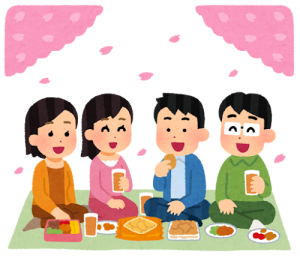
5. Best Cherry Blossom Viewing Spots
- Tokyo: Shinjuku Gyoen, Ueno Park, Chidorigafuchi (perfect for boat rides)
- Kyoto: Maruyama Park, Philosopher’s Path, Kiyomizu-dera
- Osaka: Osaka Castle Park, Kema Sakuranomiya Park
- Fuji Five Lakes: Stunning views of cherry blossoms with Mount Fuji in the background.
If you prefer a quieter experience, try venturing outside major cities. Small towns like Yoshino in Nara and Kakunodate in Akita offer breathtaking scenery without overwhelming crowds.
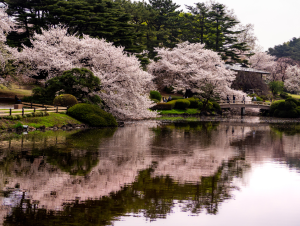
6. Conclusion: Make the Most of Your Cherry Blossom Trip!
Cherry blossom season in Japan is a magical experience, but it requires a bit of planning to fully enjoy. Keep an eye on the latest forecasts, visit a few cherry blossom festivals, and embrace local customs during hanami. Most importantly, take time to simply sit under the trees and appreciate their beauty—it’s a once-in-a-lifetime experience you won’t forget!
So, whether you’re strolling along Meguro River, enjoying a picnic in Kyoto, or gazing at cherry blossoms near Mount Fuji, savor every moment. Happy hanami!
Recommendation for Wi-Fi Router Rental
It’s available for rent at airports and major tourist locations, allowing you to connect to high-speed internet anywhere in Japan. Reservations can be easily made online, and both pickup and return are highly convenient. Without worrying about communication limits, you can check maps, search for restaurants, and post on social media, enriching your travel experience.
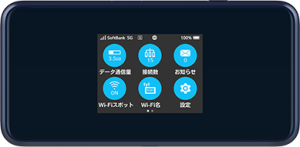
For renting Wi-Fi, “wifi-rental-japan” is recommended!
These gadgets showcase the best of Japanese technology and design, making them highly beneficial for visitors to Japan. Be sure to take advantage of these useful gadgets when traveling in Japan.
Recommended eSIM Service
The eSIM from RakuSim, which uses networks from major Japanese carriers, provides reliable connectivity not only in urban areas but also in rural regions. It offers plans suitable for short-term stays as well.
Easy Purchase & Setup
Purchasing is simple and fully online. After purchase, follow the URL in the confirmation email to download your eSIM profile, or scan the QR code provided. You’ll be ready to use the service on the same day.
Flexible Plans
RakuSim offers a variety of plans to match different stay lengths, from short to long-term. Popular for its high data capacity and great value.
Reliable Support
Customer support is available every day, including weekends and holidays, from 10:00 AM to 7:00 PM. You can reach the team via email or phone for any inquiries.
Wide Coverage
Using the docomo network, RakuSim covers even rural and mountainous areas, providing stable connections even on the move.
Pricing Plans
-
- 30GB / 8 Days: ¥2,900
Ideal for short-term use! High-capacity plan with excellent value. - 50GB / 16 Days: ¥3,400
Enjoy streaming and video calls with up to 50 hours over 16 days! - 50GB / 30 Days: ¥4,700
Perfect for one-month stays! Enjoy 50GB for streaming, emails, and social media with peace of mind for an entire month!
- 30GB / 8 Days: ¥2,900
▶Click here to purchase an eSIM:https://rakusim.net/


